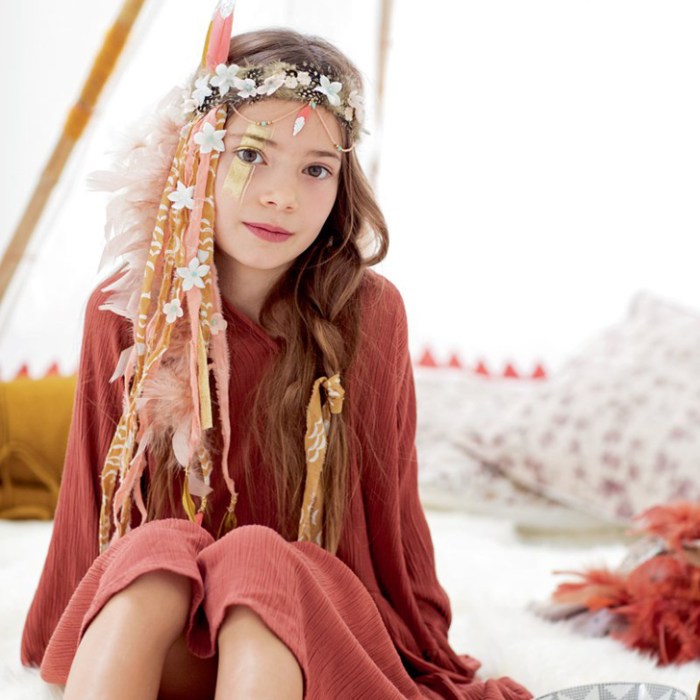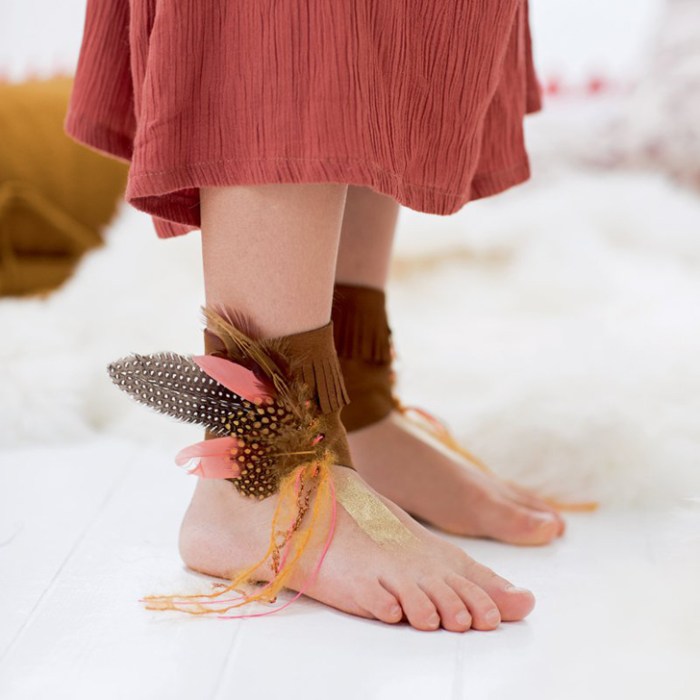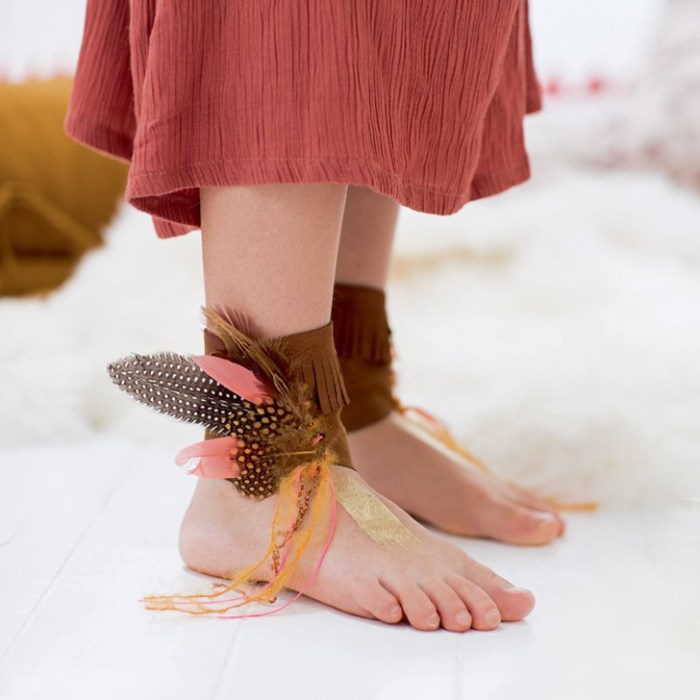DIY Indian costume, a captivating journey through vibrant fabrics, intricate embellishments, and cultural heritage. From the graceful drape of a saree to the elegance of a salwar kameez, creating your own Indian costume is an enriching experience that allows you to explore the rich tapestry of Indian fashion.
This guide delves into the history, techniques, and styles of Indian costume, offering a comprehensive overview of materials, design inspiration, and step-by-step instructions. It emphasizes cultural sensitivity and responsible representation, ensuring that your DIY project reflects respect and appreciation for Indian traditions.
Materials and Techniques for DIY Indian Costume

Crafting an authentic Indian costume involves understanding the diverse materials and traditional techniques used in Indian garment making. From vibrant fabrics to intricate embroidery, each element carries cultural significance and contributes to the beauty and uniqueness of Indian attire.
Fabric Selection
The choice of fabric is crucial in Indian costume making, as it determines the drape, texture, and overall aesthetic of the garment.
- Silk: Known for its luxurious sheen and smooth texture, silk is a popular choice for sarees, lehengas, and kurtas. It is often used for special occasions and festivals, symbolizing wealth and elegance.
- Cotton: A breathable and comfortable fabric, cotton is widely used in everyday wear, including salwar kameez, dhotis, and kurtas. It is known for its durability and versatility, making it suitable for various climates and occasions.
- Chiffon: A lightweight and sheer fabric, chiffon is often used for sarees and dupattas, adding a touch of elegance and femininity. Its delicate nature makes it ideal for draping and creating flowing silhouettes.
- Velvet: Rich and luxurious, velvet is often used for traditional garments like sherwanis and jackets. Its soft texture and deep colors lend a regal and opulent feel to the attire.
- Brocade: This intricate fabric is characterized by its woven patterns and designs, often incorporating metallic threads. Brocade is commonly used for sarees, lehengas, and traditional wedding attire, symbolizing opulence and grandeur.
Embroidery Techniques
Embroidery is an integral part of Indian costume making, adding intricate details and patterns to garments.
- Kantha: Originating in Bengal, Kantha embroidery uses running stitches to create intricate patterns on fabric, often featuring floral motifs and geometric designs. This traditional technique is known for its simplicity and the use of recycled materials.
- Chikankari: A delicate and intricate embroidery technique from Lucknow, Chikankari uses white thread on fine cotton fabric to create delicate floral patterns and geometric designs. It is known for its intricate detail and the use of fine needlework.
- Zardozi: A luxurious embroidery technique using metallic threads, pearls, and beads, Zardozi is often used for embellishing bridal wear and other ceremonial attire. It is known for its opulent and elaborate designs, often incorporating traditional motifs and patterns.
- Aari: A traditional embroidery technique from Gujarat, Aari uses a hooked needle to create intricate patterns on fabric. It is often used for embellishing sarees, lehengas, and other traditional garments, featuring floral motifs, geometric designs, and intricate borders.
Dyeing Techniques
Dyeing plays a significant role in Indian costume making, adding vibrant colors and patterns to fabrics.
- Natural Dyes: Traditional Indian dyeing techniques often utilize natural dyes derived from plants, minerals, and insects. These dyes produce vibrant and long-lasting colors, adding a unique depth and richness to fabrics. Examples include indigo for blue, turmeric for yellow, and henna for reddish-brown.
- Block Printing: A technique that involves carving wooden blocks with intricate designs and then using them to transfer patterns onto fabric. Block printing is a traditional method for creating vibrant and intricate patterns on sarees, kurtas, and other garments.
- Tie and Dye: This technique involves tying sections of fabric with string or thread before dyeing, creating a unique and resist-dyed effect. Tie and dye is a versatile technique used for creating intricate patterns and designs on sarees, scarves, and other garments.
Weaving Techniques
Weaving is an essential part of Indian costume making, creating a variety of fabrics with unique textures and patterns.
- Handloom Weaving: Traditional handloom weaving techniques are still practiced in India, using hand-operated looms to create intricate fabrics. Handloom weaving is known for its unique textures, intricate patterns, and the use of natural dyes.
- Ikat: A resist-dyeing technique where yarn is tied and dyed before weaving, creating intricate patterns and designs. Ikat is a highly skilled and time-consuming technique, producing fabrics with a unique and distinctive appearance.
Cultural Significance
The materials and techniques used in Indian costume making are not only aesthetically pleasing but also hold significant cultural value. They reflect the rich heritage, craftsmanship, and traditions of India.
- Symbolism: The colors, patterns, and motifs used in Indian costumes often carry symbolic meanings, representing different regions, religions, and social groups. For example, the color red is associated with auspiciousness and good luck, while the color yellow symbolizes prosperity.
- Craftsmanship: The intricate embroidery, dyeing, and weaving techniques used in Indian costume making are a testament to the skilled craftsmanship of Indian artisans. These techniques have been passed down through generations, preserving traditional knowledge and skills.
- Cultural Identity: Indian costumes are a powerful symbol of cultural identity, reflecting the diverse traditions and heritage of the country. They are an important part of Indian culture and are often worn for festivals, weddings, and other special occasions.
DIY Indian Costume Ideas for Different Occasions
Creating a DIY Indian costume can be a fun and rewarding experience, allowing you to express your creativity and cultural appreciation. Whether you’re attending a wedding, festival, cultural celebration, or themed party, there are numerous costume ideas you can bring to life with a little ingenuity and effort.
Wedding Costumes
Indian weddings are vibrant and colorful affairs, making them an excellent opportunity to showcase a beautiful DIY Indian costume.
- Traditional Saree: A saree is a quintessential Indian garment, often worn at weddings. You can create a stunning saree look by draping a colorful fabric around your body and securing it with a blouse and petticoat. You can choose from a wide array of saree fabrics like silk, chiffon, or cotton, and embellish it with sequins, embroidery, or beadwork. A saree is usually paired with a matching blouse and petticoat, and you can accessorize with a statement necklace, earrings, and bangles.
- Lehenga Choli: A lehenga choli is another popular choice for Indian weddings. This traditional outfit consists of a long, flowing skirt (lehenga), a fitted top (choli), and a dupatta (scarf). You can find pre-made lehengas or create your own by stitching together fabric panels. To add a touch of elegance, consider embellishing the lehenga with sequins, embroidery, or beadwork. A matching choli and dupatta will complete the look.
- Salwar Kameez: A salwar kameez is a comfortable and stylish option for a wedding. This traditional outfit features a long tunic (kameez) paired with loose, fitted pants (salwar). You can find pre-made salwar kameez sets or create your own by stitching together fabric panels. For a more formal look, choose a salwar kameez made from silk, velvet, or brocade. You can accessorize with a dupatta, jewelry, and a clutch.
Festival Costumes
Festivals in India are joyous occasions filled with vibrant colors and intricate costumes.
- Diwali Costume: Diwali, the festival of lights, is celebrated with dazzling lights, fireworks, and traditional attire. A DIY Diwali costume could feature a traditional kurta pajama for men, or a salwar kameez or lehenga choli for women. You can add sparkle and festivity with sequins, glitter, and gold accents. Consider adding a headband or jewelry with a diya (oil lamp) motif.
- Holi Costume: Holi, the festival of colors, is celebrated with vibrant colors and playful water fights. A DIY Holi costume could be simple yet fun. Consider a white or light-colored kurta pajama or salwar kameez, ready to be splattered with vibrant colors. Add a touch of fun with colorful headbands, wristbands, or accessories.
- Navratri Costume: Navratri, a nine-night festival, is celebrated with traditional dances and colorful attire. A DIY Navratri costume could feature a traditional chaniya choli, a colorful skirt and top combination popular in Gujarat. You can find pre-made chaniya cholis or create your own with colorful fabric panels and embellishments. Accessorize with traditional jewelry and a colorful dupatta.
Cultural Celebration Costumes
Cultural celebrations are a great opportunity to showcase your heritage and pride.
- Traditional Indian Dance Costume: For a cultural dance performance, a DIY costume could be a traditional dance outfit. For example, a Bharatanatyam costume might feature a colorful silk saree, a fitted blouse, and elaborate jewelry. A Kathak costume could feature a long, flowing skirt, a fitted top, and intricate embroidery. Remember to consider the specific dance form and choose fabrics and embellishments that are appropriate for the style and movement of the dance.
- Regional Indian Costume: India has a diverse range of regional costumes. For a cultural celebration, you can create a DIY costume that represents a specific region of India. For example, a Punjabi costume could feature a colorful salwar kameez with intricate embroidery. A Bengali costume could feature a white saree with a red border. Research the traditional attire of the region you want to represent and choose fabrics and embellishments that are authentic to the region.
Themed Party Costumes, Diy indian costume
Themed parties offer a chance to be creative and have fun with your costume choices.
- Bollywood Costume: A Bollywood-themed party is a perfect opportunity to embrace the glamour and glitz of Indian cinema. A DIY Bollywood costume could feature a sparkly saree, a sequined lehenga choli, or a glamorous salwar kameez. Accessorize with bold jewelry, a dramatic bindi, and a stylish hairstyle.
- Indian Mythology Costume: An Indian mythology-themed party allows you to explore the fascinating world of Indian gods and goddesses. A DIY costume could be inspired by deities like Ganesha, Krishna, or Durga. You can create a costume by using fabric, paint, and other materials to recreate the iconic features of the deity.
Inspiration for DIY Indian Costume Design
Indian costumes are renowned for their vibrant colors, intricate embellishments, and rich cultural significance. They offer a wealth of inspiration for DIY projects, from traditional sarees and salwar kameez to modern fusion wear.
Costume Inspiration from Movies
Movies have often showcased stunning Indian costumes, providing a visual feast of inspiration for DIY projects.
- “Slumdog Millionaire” (2008): The film featured a vibrant palette of colors and traditional Indian clothing, particularly the costumes worn by the female characters. The brightly colored sarees and salwar kameez with intricate embroidery were eye-catching. You can draw inspiration from the film’s use of bold colors and traditional designs.
- “Bride & Prejudice” (2004): This Bollywood adaptation of Jane Austen’s “Pride and Prejudice” featured lavish costumes that showcased the beauty of Indian fabrics and embellishments. The wedding scenes, in particular, were a visual treat, with intricate embroidery and dazzling jewelry. You can adapt the elegant styles and intricate embellishments for your DIY project.
- “The Jewel of the Nile” (1985): This action-adventure film features a memorable scene where the character of Joan Wilder (played by Kathleen Turner) wears a beautiful sari, symbolizing the allure and beauty of Indian attire. This scene demonstrates how a simple sari can be styled to create a dramatic and elegant look.
Costume Inspiration from Books
Literary works, particularly those set in India, offer insights into traditional attire and provide inspiration for DIY projects.
- “The Jungle Book” by Rudyard Kipling (1894): This classic children’s story features characters dressed in traditional Indian attire, including Mowgli, who is depicted wearing a loincloth. This story provides inspiration for creating simple yet authentic-looking costumes.
- “A Suitable Boy” by Vikram Seth (1993): This sprawling novel set in post-independence India offers a rich tapestry of characters and their attire. The novel describes a variety of Indian clothing styles, including sarees, salwar kameez, and dhotis. You can draw inspiration from the book’s descriptions of fabrics, colors, and embroidery.
- “The God of Small Things” by Arundhati Roy (1997): This acclaimed novel offers a glimpse into the lives of a family in Kerala, India. The novel features detailed descriptions of traditional Kerala clothing, including the saree and the mundu. You can adapt these styles for your DIY project.
Costume Inspiration from Art
Indian art, spanning centuries, provides a wealth of inspiration for DIY costume design.
- Mughal Miniatures: These intricate paintings often depict figures dressed in exquisite attire, showcasing elaborate embroidery, rich colors, and flowing fabrics. You can draw inspiration from the Mughal miniatures for creating intricate embellishments and using vibrant colors.
- Tanjore Paintings: These South Indian paintings, known for their vibrant colors and intricate details, often feature figures adorned with traditional jewelry and clothing. You can adapt the use of bold colors and elaborate patterns for your DIY project.
- Ajanta Cave Paintings: These ancient cave paintings depict scenes from the life of Buddha and other deities, showcasing the traditional attire of the time. You can draw inspiration from the simple yet elegant styles of the Ajanta Cave paintings for creating a classic Indian look.
Celebrating Diversity Through DIY Indian Costume

Creating a DIY Indian costume is a wonderful way to celebrate diversity and embrace the rich cultural heritage of India. By engaging in the process of designing and crafting your own costume, you can gain a deeper understanding and appreciation for the traditions, artistry, and symbolism that are embedded within Indian attire.
Examples of Cultural Understanding and Respect
DIY Indian costumes can be a powerful tool for promoting cultural understanding and respect. Here are some examples of how these costumes can be used to foster a more inclusive and appreciative environment:
- School Events: Schools can organize cultural events where students can showcase their DIY Indian costumes, allowing them to learn about different Indian states, festivals, and traditions. This fosters a sense of inclusivity and helps break down stereotypes.
- Community Festivals: DIY Indian costumes can be a highlight of community festivals, allowing people to celebrate the diversity of their community and learn about different cultures through the lens of fashion.
- Theatrical Productions: When creating costumes for theatrical productions based on Indian stories or themes, DIY approaches can help ensure authenticity and respect for cultural details. This also provides an opportunity to educate the audience about Indian culture through the performance.
“DIY Indian costumes can be a fun and educational way to explore and appreciate the rich cultural heritage of India.”
Embarking on a DIY Indian costume journey is an opportunity to celebrate diversity, learn about cultural traditions, and express your creativity. With careful planning, thoughtful design, and a touch of cultural sensitivity, you can craft a unique and meaningful costume that reflects your personal style and pays homage to the vibrant heritage of India.
Creating a DIY Indian costume can be a fun and rewarding project. From vibrant fabrics to intricate embellishments, there’s a lot of creativity involved. And if you’re looking for inspiration for a special gift for Dad, you might find some great ideas in this article on DIY Christmas presents for Dad. Perhaps you can use some of those techniques to add a unique touch to your costume, like a personalized embroidered patch or a handcrafted accessory.

